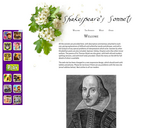
A list of Shakespeare's sonnets
- Subject:
- English Language Arts
- Material Type:
- Reading
- Date Added:
- 07/29/2018

A list of Shakespeare's sonnets
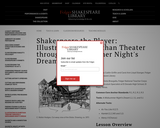
In this activity, you and your students will explore Elizabethan stage practices as the rustic yet enthusiastic amateur actors from Shakespeare's A Midsummer Night's Dream. While it's not necessary to teach Shakespeare's biography while studying his plays, sometimes opportunities to explore his world through his own eyes present themselves in his text. Students' new insights into the text will provide them with a deeper appreciation for Shakespeare’s world. This activity will take one or two class periods.
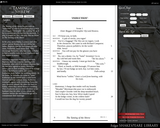
The Folger Shakespeare Library provides the full searchable text of "The Taming of the Shrew" to read online or download as a PDF. All of the lines are numbered sequentially to make it easier and more convenient to find any line.

The Folger Shakespeare Library provides the full searchable text of "The Tempest" to read online or download as a PDF. All of the lines are numbered sequentially to make it easier and more convenient to find any line.
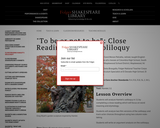
This three-day lesson plan leads students through a close reading and analysis of Hamlet's "To be or not to be" soliloquy. Students will analyze Hamlet's soliloquy in Act 3.1 by completing a close reading which will focus on word meaning and etymology. Students will analyze two film versions of the soliloquy and track actor choices throughout using two column note-taking. Finally, students will write an argument analysis on the soliloquy.
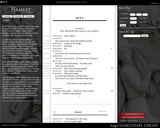
The Folger Shakespeare Library provides the full searchable text of "Hamlet" to read online or download as a PDF. All of the lines are numbered sequentially to make it easier and more convenient to find any line.
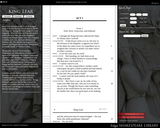
The Folger Shakespeare Library provides the full searchable text of King Lear to read online or download as a PDF. All of the lines are numbered sequentially to make it easier and more convenient to find any line.
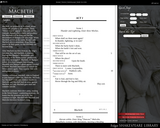
The Folger Shakespeare Library provides the full searchable text of "Macbeth" to read online or download as a PDF. All of the lines are numbered sequentially to make it easier and more convenient to find any line.
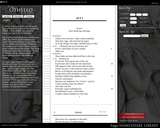
The Folger Shakespeare Library provides the full searchable text of "Othello" to read online or download as a PDF. All of the lines are numbered sequentially to make it easier and more convenient to find any line.
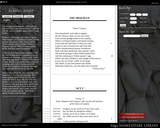
The Folger Shakespeare Library provides the full searchable text of "Romeo and Juliet" to read online or download as a PDF. All of the lines are numbered sequentially to make it easier and more convenient to find any line.

The Folger Shakespeare Library provides the full searchable text of "Twelfth Night" to read online or download as a PDF. All of the lines are numbered sequentially to make it easier and more convenient to find any line.
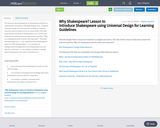
The resource was developed as an introductory activity to a Shakespeare unit within a 9th grade English class . Using the Universal Design for Learning (UDL) Guidelines, students have the choice to listen to one (or more) of four TED Talks exploring the relevancy of Shakespeare in our current time. Students are working toward answering the question, "Why are Shakespeare and his works still important?" The lesson learning targets are:
1. I can understand how Shakespeare’s works are still relevant today.
2. I can activate my background knowledge about who Shakespeare was and why he is important.
3. I can analyze a speaker’s message about Shakespeare and make connections to it.

William Shakespeare (baptized on April 26, 1564 – April 23, 1616) was an English playwright, actor and poet who also known as the “Bard of Avon” and often called England’s national poet. Shakespeare's works are known throughout the world, but his personal life is shrouded in mystery. Learn more at Biography.com.
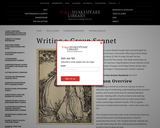
This lesson allows students to write a collaborative sonnet, either as a class or in small groups. Composing a sonnet as a class or group can be an effective way of reinforcing understanding of the sonnet's pattern and could be used to pave to the way for writing individual sonnets. Students start with the rhyme scheme and work backwards to fill in the iambic pentameter of the lines. This could easily be used with many sonnet or poetic forms.